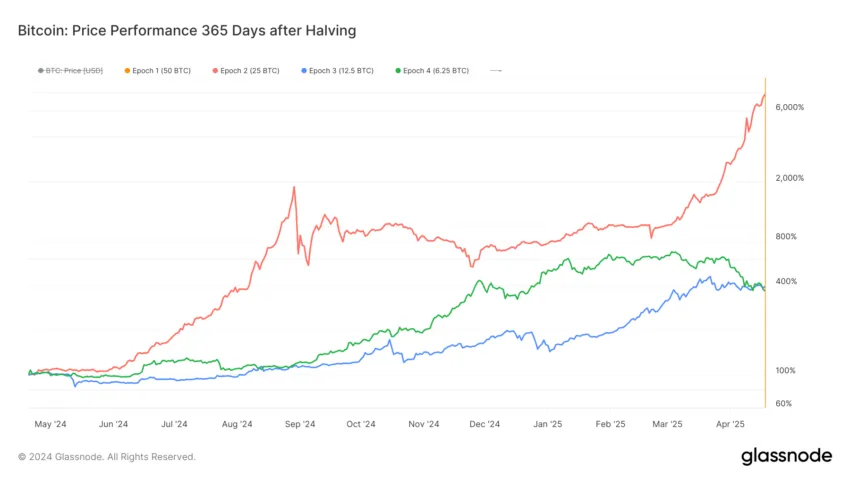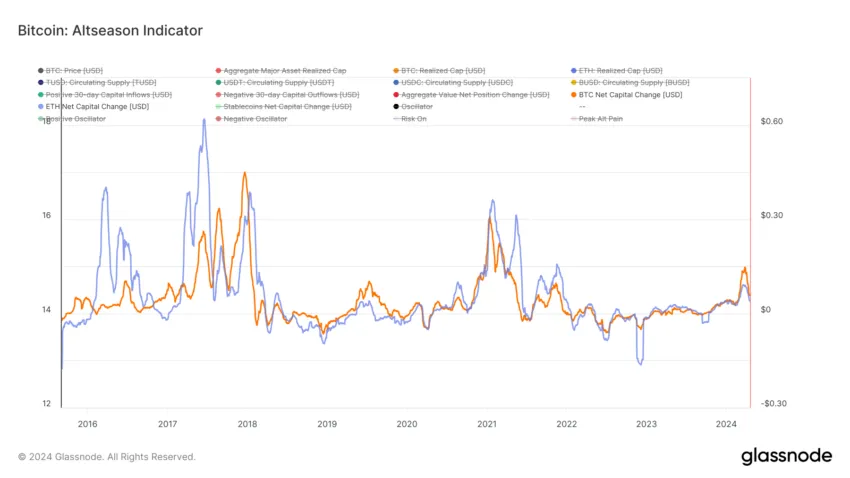Why Investors Must Turn to Altcoins

The cryptocurrency market, particularly Bitcoin, undergoes a transformative phase every four years known as the “halving,” where the rewards for mining are halved, significantly affecting the influx of new BTC.
This anticipated event reduces the supply, traditionally escalating Bitcoin’s price due to its increased scarcity. As the 2024 halving takes place, industry leaders shares crucial insights. They highlight the impact this event has on trading strategies and the broader investment landscape.
Immediate Effects Post-Halving
John Patrick Mullin, CEO of real-world assets (RWA) Layer 1 blockchain MANTRA, told BeInCrypto about the immediate effects of the Bitcoin halving. He predicts increased market volatility due to the sudden reduction in block rewards.
“After a halving, short-term traders should be prepared for increased volatility. The reduced block reward can lead to immediate market reactions, and traders should watch for potential price swings to capitalize on quick profits or mitigate losses,” Mullin explained.
This period of fluctuation presents opportunities and risks, requiring investors to be highly vigilant and responsive to market signals.
Mullin notes the importance of monitoring the hash rate and miner activity after the halving. A decrease in hash rate following a halving could signal miner capitulation, which may precipitate a short-term decline in Bitcoin’s price. This scenario offers strategic entry points for investors or could serve as a cautionary signal to delay further investments.
While the halving stirs considerable activity and speculation among short-term traders, Mullin advocates a different approach for long-term investors. He suggests that they “might consider holding or gradually accumulating more Bitcoin,” focusing on the enduring potential for price appreciation as the newly constrained supply of Bitcoin interacts with steady or increasing demand.
Likewise, Nash Lee, co-founder of decentralized exchange (DEX) MerlinSwap, believes that long-term investors should look beyond immediate fluctuations, anticipating the substantial price gains that have historically followed halving events.
“The decrease in Bitcoin’s supply may lead to price increases, prompting a long-term consideration of increasing Bitcoin holdings. Compared to other altcoins, Bitcoin exhibits less price volatility, coupled with bullish news such as the spot Bitcoin exchange-traded funds (ETFs) this year, making it advisable to consider increasing BTC holdings relative to other assets,” Lee told BeInCrypto.

Looking back at historical data surrounding supply and price dynamics during previous Bitcoin halving events provides valuable context.
In the first halving event on November 28, 2012, Bitcoin’s price was $12, surging to a peak of $1,242, a staggering 9,937% increase. Similarly, the second halving event on July 16, 2016, saw the price at $664, eventually reaching a peak of $19,804, marking a 2,903% increase. The most recent halving on May 11, 2020, witnessed a price of $8,571, with the subsequent peak hitting $68,997, an 705% increase.
Read more: What Happened at the Last Bitcoin Halving? Predictions for 2024
According to Kristian Haralampiev, Products Lead at crypto platform Nexo, these historical trends demonstrate the potential for significant price appreciation following halving events.
“Bitcoin’s deflationary nature, highlighted by the reduction in newly issued supply during halving events, enhances its appeal as a hedge against global inflation. This characteristic solidifies its status as a desirable asset, particularly during times of economic uncertainty. Consequently, attention intensifies around halving events, further bolstering Bitcoin’s reputation as a store of value,” Haralampiev said in an interview with BeInCrypto.
When Altcoin Season Starts
The discussion extends beyond Bitcoin. Mullin points out that post-halving, the cryptocurrency market often sees a shift where investor focus broadens to include altcoins.
“The increased attention and capital flow into the market can lead to a so-called ‘altcoin season,’ where altcoins experience significant price increases after Bitcoin’s initial surge. Once the hype around the Bitcoin halving fades, investors might look to diversify. This strategy should be approached particularly if investors search for ‘the next big thing’ following Bitcoin’ bull run’s rally,” Mullin affirmed.
This broadened perspective is crucial as the market adapts and recalibrates following the halving. Historically, as Bitcoin’s price stabilizes after its initial post-halving surge, altcoins begin to attract attention.
Indeed, a parabolic altcoin season usually unfolds when Bitcoin’s price stabilizes after its initial post-halving surge, prompting investors to seek higher returns. If Bitcoin’s price significantly increases and its market dominance rises, a subsequent reversal in this dominance could lead investors to start taking profits and reallocating funds to altcoins.
This pattern was observed after the 2020 halving when Bitcoin’s dominance peaked at 73%. Should similar trends recur in 2024, a shift from Bitcoin to altcoins might be expected.
Read more: Which Are the Best Altcoins To Invest in April 2024?
Investors contemplating such moves should meticulously evaluate altcoins based on their use cases, technological foundations, development teams, community support, and market positions. Additionally, monitoring market sentiments and trends is crucial, as altcoins tend to rally when the market is bullish about new technologies or projects.

However, due to their higher volatility and risk compared to Bitcoin, investors must carefully assess their risk tolerance and consider diversifying their portfolios to effectively manage these risks. Lee maintains that conducting comprehensive research is essential to mitigate the risks of succumbing to fear of missing out (FOMO) and investing in lesser-known altcoins, which could carry significant risks.
“After the Bitcoin halving, some people believe that altcoins offer more attractive investment opportunities. However, altcoins are known for their higher volatility compared to Bitcoin, requiring careful evaluation. It’s essential to thoroughly research the projects and backgrounds to ensure understanding of the investment’s value and potential returns,” Lee emphasized.
Looking ahead, the implications of the halving extend into the broader financial ecosystem. The insights from Mullin, Haralampiev, and Lee suggest that the halving reinforces Bitcoin’s status as the leading cryptocurrency. It also acts as a catalyst for increased market dominance and subsequent investment shifts into altcoins.
These dynamics underline the importance of a well-rounded investment strategy that accommodates the immediate impacts of the Bitcoin halving and its longer-term effects on market behavior and investor sentiment.
Disclaimer
Following the Trust Project guidelines, this feature article presents opinions and perspectives from industry experts or individuals. BeInCrypto is dedicated to transparent reporting, but the views expressed in this article do not necessarily reflect those of BeInCrypto or its staff. Readers should verify information independently and consult with a professional before making decisions based on this content. Please note that our Terms and Conditions, Privacy Policy, and Disclaimers have been updated.



